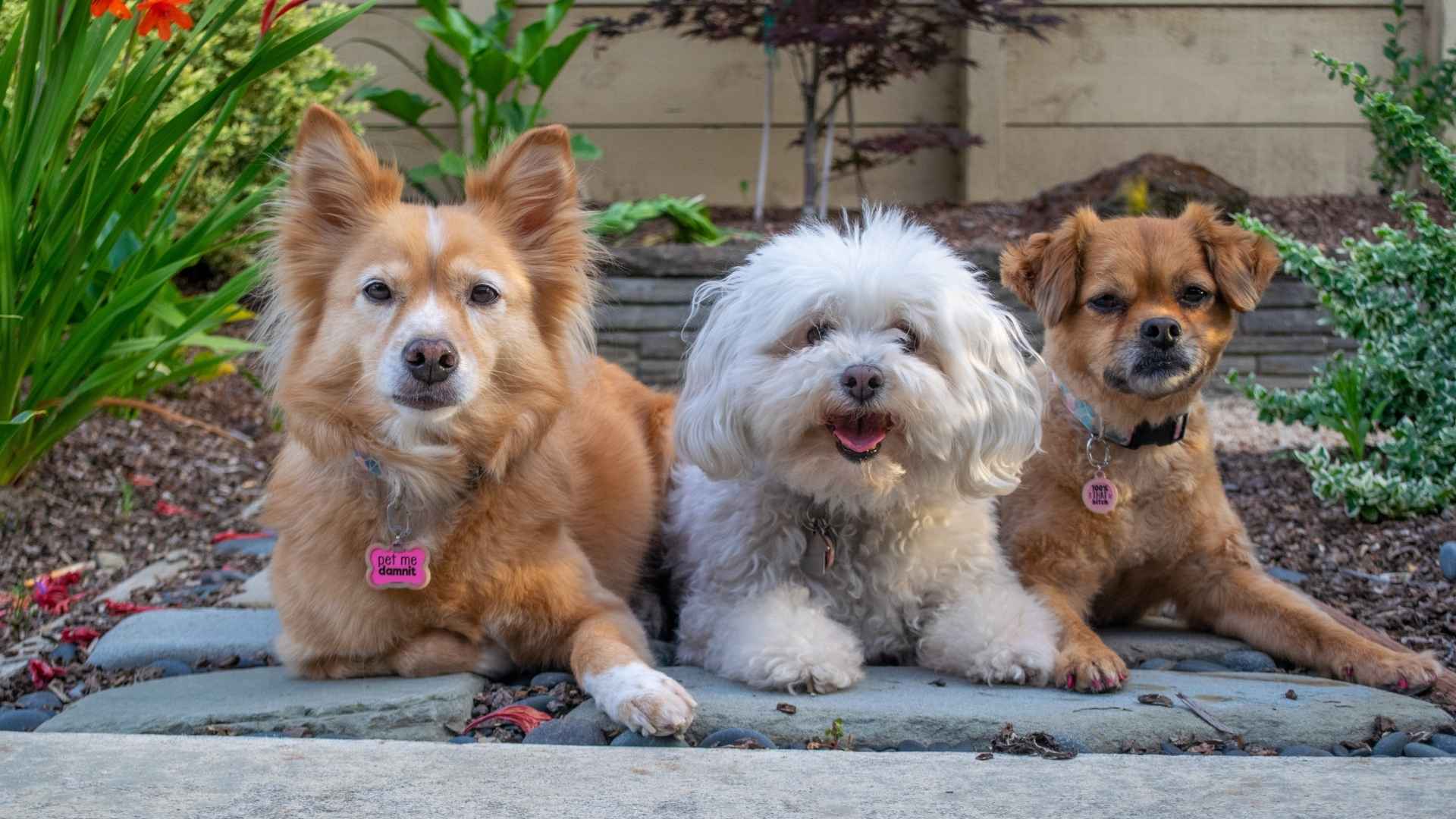Finding the perfect dog isn’t just about size—it’s about lifestyle, energy levels, and personality. Many people want a breed that’s manageable yet sturdy, playful but not overwhelming, and affectionate without being overly dependent. Small to medium dog breeds strike that perfect balance, making them a top choice for various households.
City dwellers often worry about space, while active individuals seek a companion that keeps up with their pace. Families might want a dog that’s great with kids but easy to care for. The right breed can fit seamlessly into your routine, providing companionship, security, and joy without excessive challenges.
This guide explores some of the best small to medium-sized breeds, each with unique traits that cater to different lifestyles. Let’s find the one that’s perfect for you.
Fun Fact:
Did you know that small to medium-dog breeds often live longer than their larger counterparts? Their moderate size contributes to overall health and longevity, with some breeds exceeding 15 years of life!
Small to Medium Dog Breeds
1. Beagle
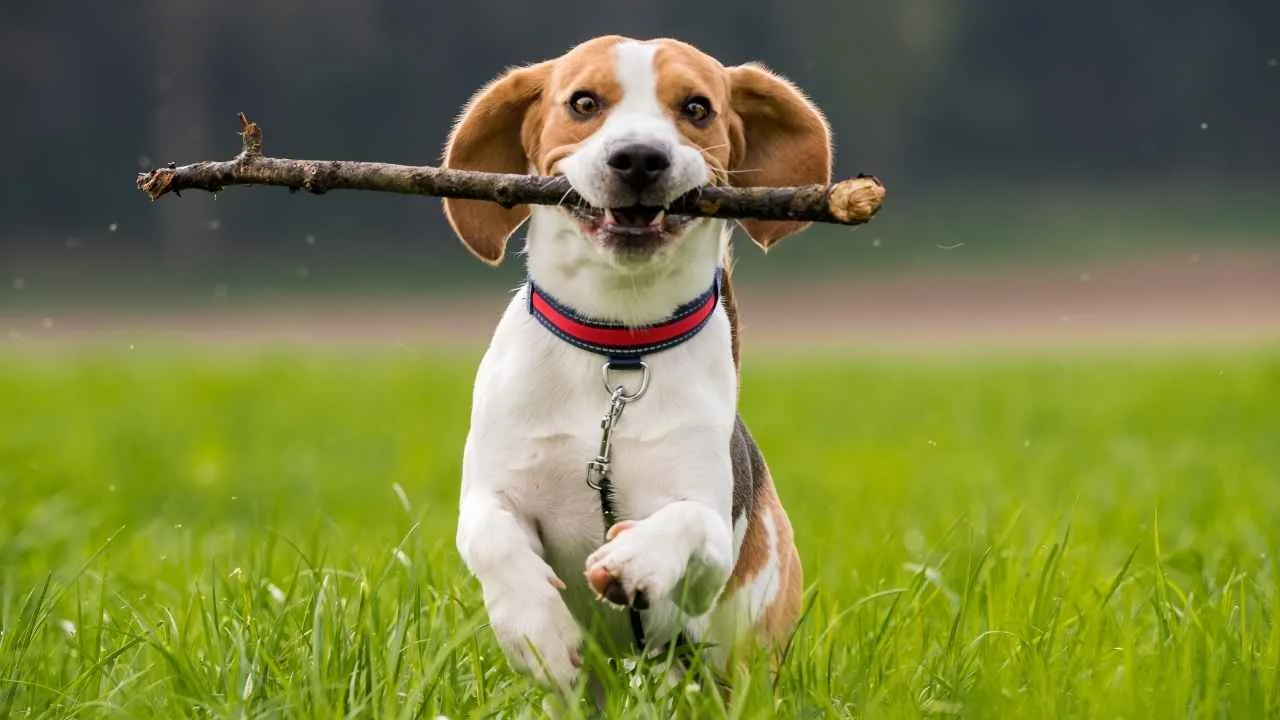
Weight: 20–30 lbs
Height: 13–15 inches
Beagles bring energy, curiosity, and a sharp nose that never stops working. Originally bred for hunting, they still have an unstoppable drive to follow scents. Their sturdy bodies and adventurous nature make them a small-to-medium powerhouse packed with enthusiasm.
These dogs are natural explorers, always sniffing out something interesting. Whether tracking a scent outdoors or investigating household corners, their curiosity knows no limits. A secure yard or leash is essential to keep their noses from leading them astray.
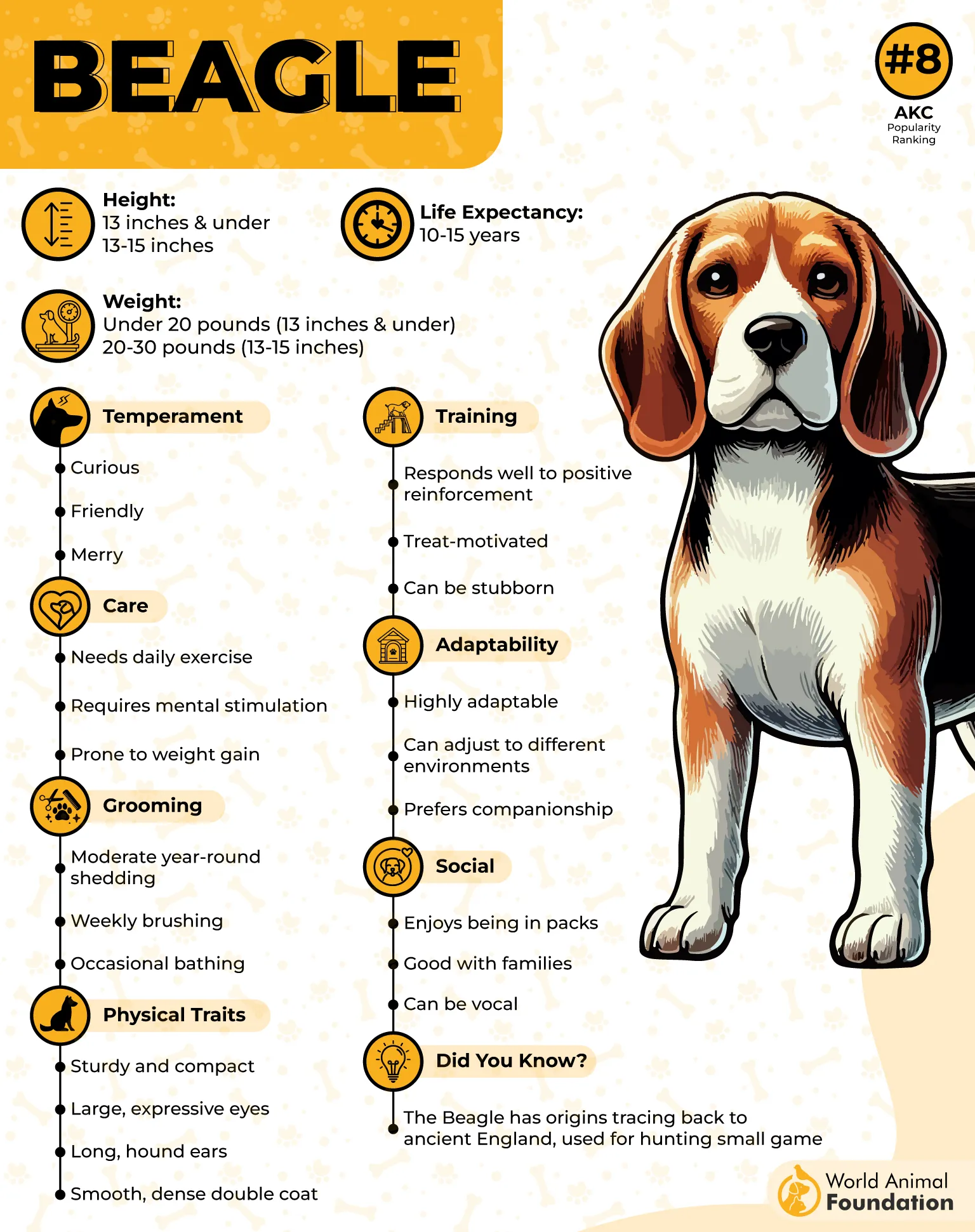
Beagles love food more than anything, making mealtime their favorite event. This enthusiasm for eating can quickly lead to weight gain. Carefully measured portions and scheduled meals help maintain their health, preventing obesity-related concerns that can slow them down.
According to the AKC, with a short, dense coat, Beagles have minimal grooming needs. Weekly brushing helps remove loose hair, keeping it tidy. Their floppy ears need routine checks to prevent infections, as trapped moisture can create the perfect environment for bacteria.
Despite their small size, Beagles have a surprisingly loud voice. Their signature baying sound was meant for hunting, but it now serves as an alert system. While their expressive vocals are charming, training helps prevent excessive noise in daily life.
Fun Fact
Beagles are frequent stars in airport security teams. Their strong noses and friendly nature make them excellent at detecting contraband while keeping passengers at ease, proving their skills go far beyond traditional hunting roles.
2. French Bulldog
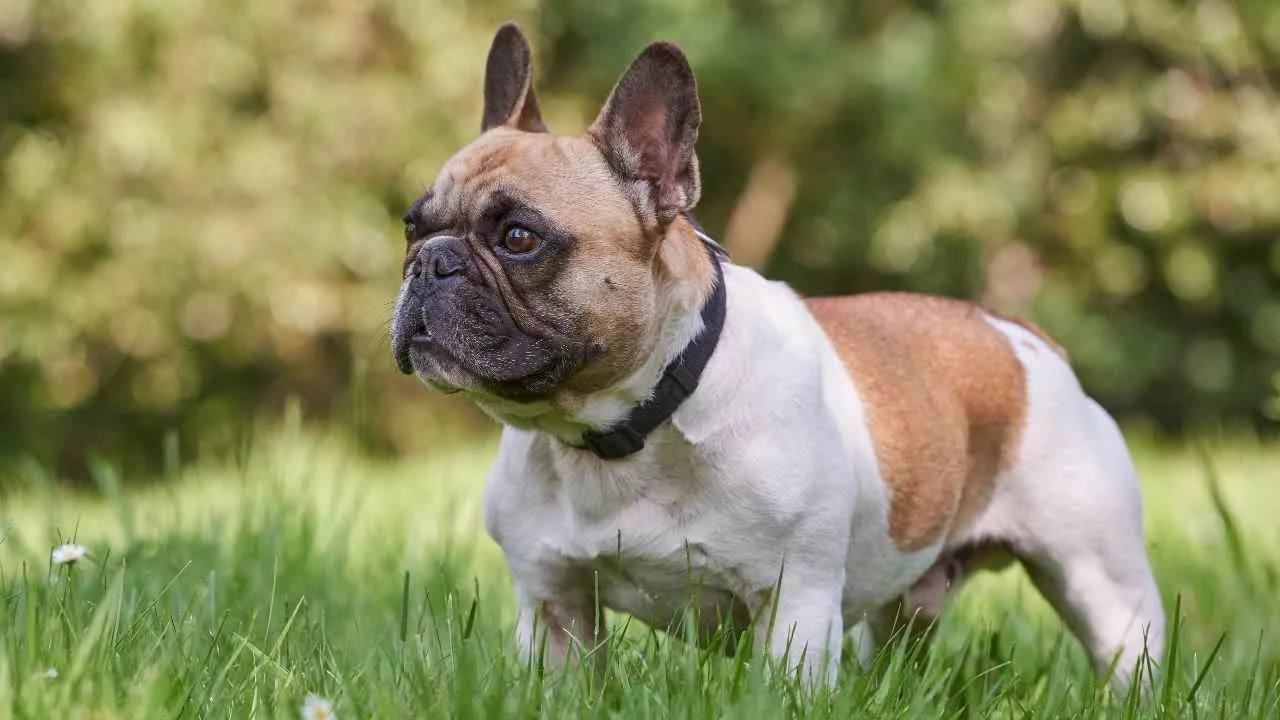
Weight: under 28 lbs
Height: 11–13 inches
The French Bulldog may be compact, but its personality is anything but small. With those unmistakable bat-like ears and an expressive face, they have a natural charm that grabs attention wherever they go. Their playful, lively nature keeps things entertaining.
French Bulldogs are content with short bursts of activity. They enjoy brief play sessions but prefer lounging around afterward. Their relaxed attitude makes them well-suited for indoor environments without sacrificing their fun-loving spirit.
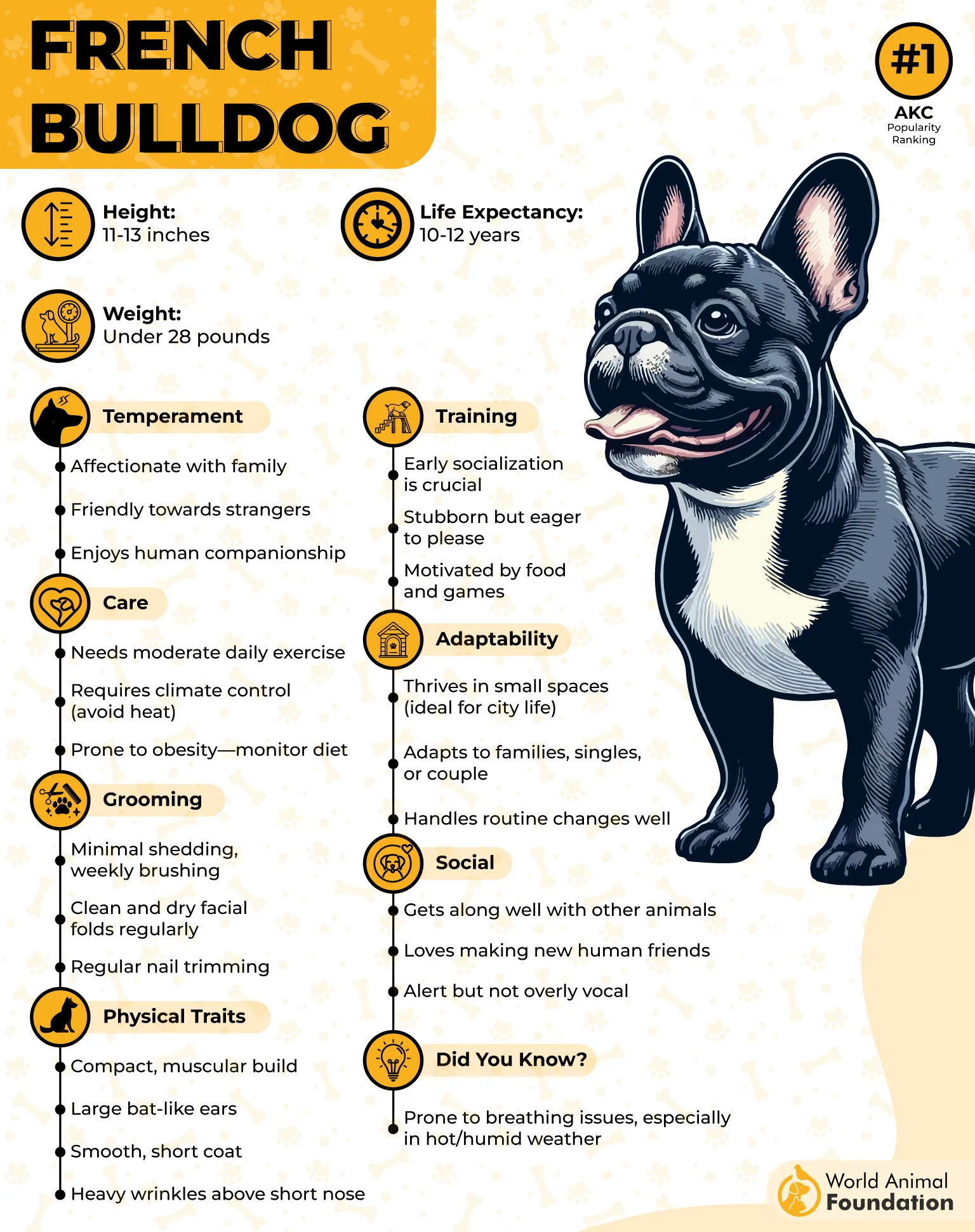
One thing Frenchies take seriously is their sensitivity to weather. Their short snouts and flat faces make breathing difficult in heat, so air conditioning is a must. Cold weather? A cozy sweater helps them stay comfortable, proving their love for warmth year-round.
Grooming is refreshingly simple, but their adorable wrinkles demand extra care. Cleaning those skin folds prevents irritation and infections. A gentle wipe-down keeps them comfortable, making sure their unique facial features stay as healthy as they are cute.
Their communication skills go beyond barking. French Bulldogs are expressive, using snorts, grunts, and playful head tilts to get their point across. Whether demanding attention or reacting to their surroundings, their vocal quirks make every interaction entertaining.
Fun Fact
French Bulldogs were once popular among lace workers in England. When the industry moved to France, these small dogs went along, becoming beloved companions in French cafés and earning their famous name in the process.
3. Basenji

Weight: 22–24 lbs
Height: 16–17 inches
The Basenji is no ordinary dog. Its sleek frame, sharp eyes, and unmatched agility make it a true athlete. It doesn’t bark—instead, it produces a unique yodel-like sound, adding to its one-of-a-kind personality.
According to WebMD, independent by nature, the Basenji thrives on curiosity and quick thinking. It isn’t the type to wait for instructions—it prefers figuring things out. Training requires patience, as this breed responds best to creative, engaging methods that keep its mind active.
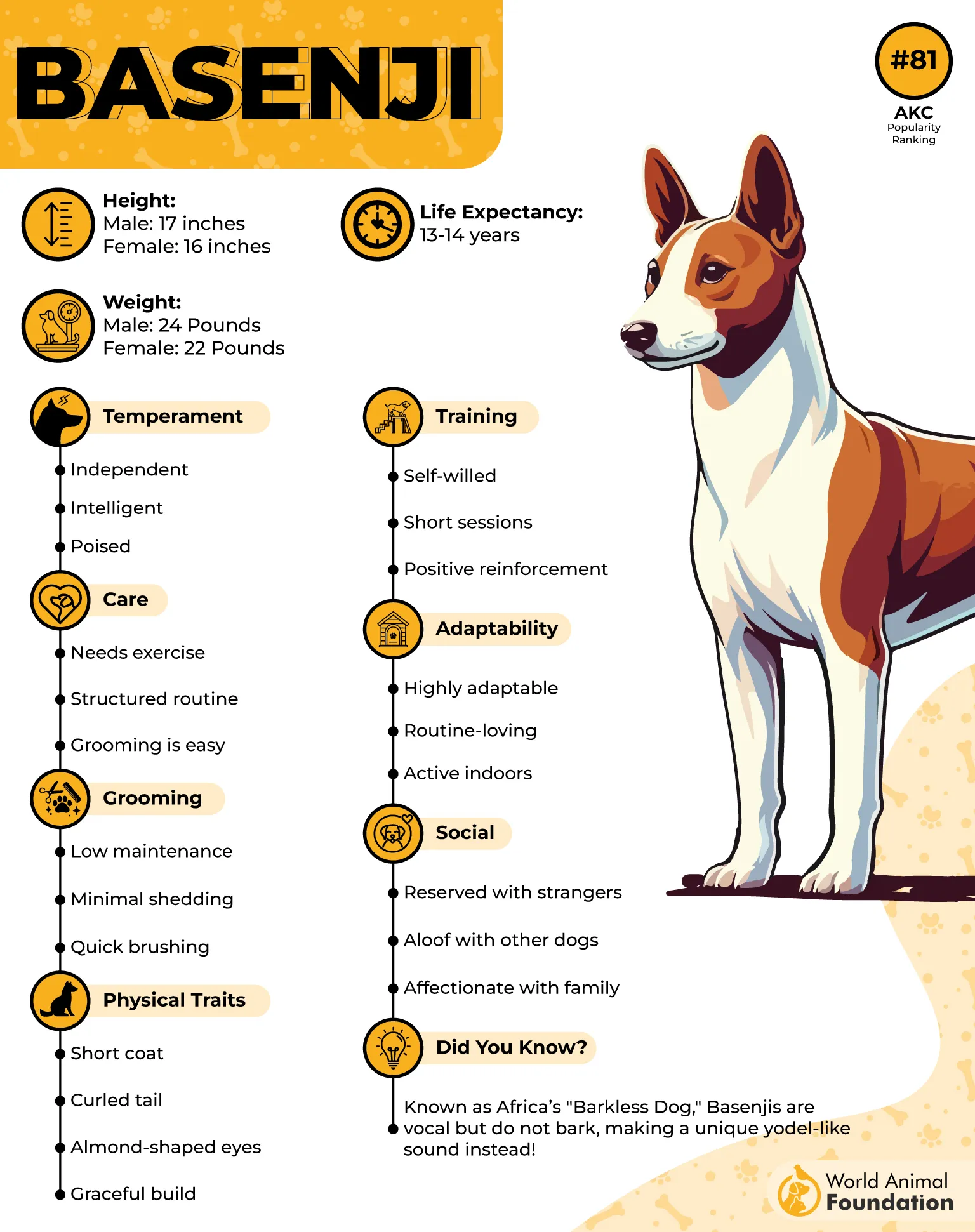
Cleanliness is second nature for a Basenji. It grooms itself much like a cat, rarely producing a noticeable odor. This natural tidiness, combined with minimal shedding, makes it one of the easiest breeds to maintain in terms of cleanliness.
A born adventurer, the Basenji has an incredible ability to leap. Fences that contain most dogs might not be enough, as this agile breed can clear surprising heights. Secure barriers and supervised outdoor time help keep their curiosity in check.
Basenjis were originally bred for hunting in Africa, excelling in speed and strategy. They worked alongside humans, using their intelligence to flush out the game. Their silent approach made them stealthy hunters, relying on sight and movement rather than sound.
Fun Fact
Ancient Egyptian tombs feature drawings of Basenjis, showing their historical significance. Pharaohs valued them for their intelligence and hunting skills, proving that their legacy as remarkable dogs has lasted for thousands of years.
4. American Eskimo Dog
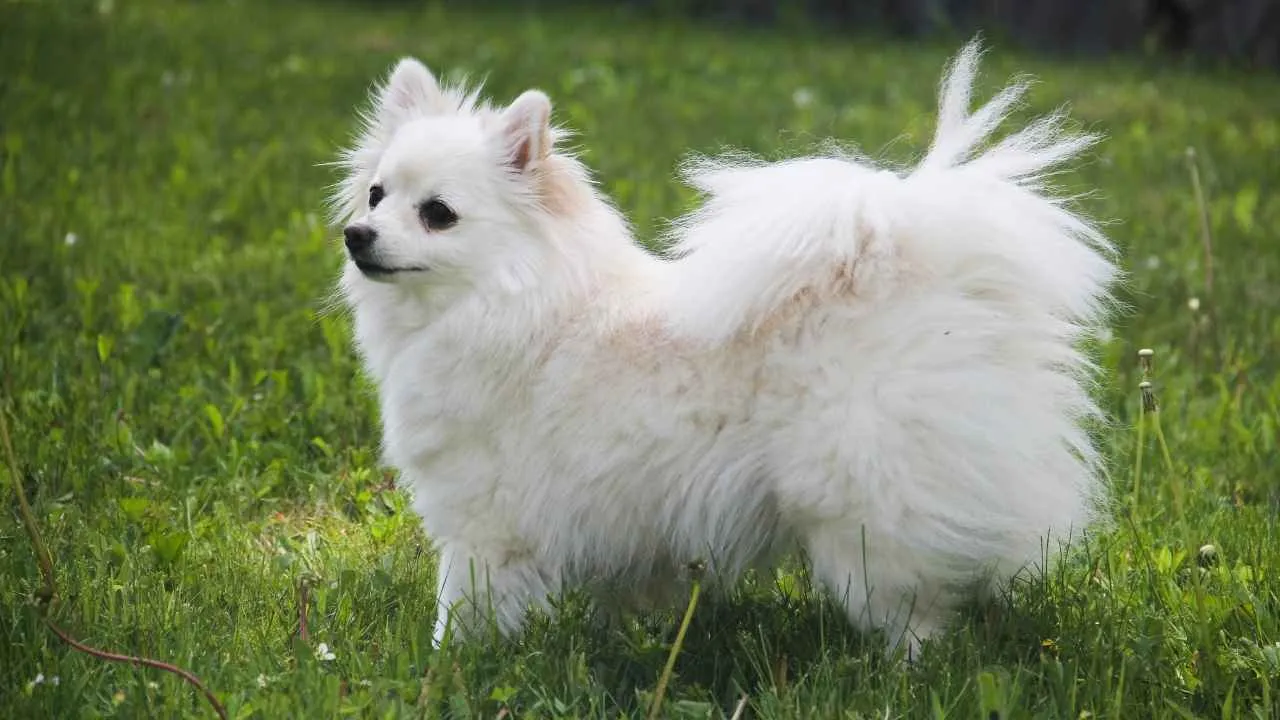
Weight: 25–35 lbs
Height: 15–19 inches
Fluffy, lively, and full of surprises, the American Eskimo Dog brings both beauty and brains to the table. Despite its elegant, snow-white coat, this breed is far from just a showpiece—it’s a clever and high-energy dynamo that thrives on engagement.
Bursting with enthusiasm, this breed loves to learn and impress. Its sharp mind absorbs commands quickly, making training a breeze. However, it demands variety; repetitive drills won’t cut it. Challenge it with agility courses, scent work, and fun tricks.
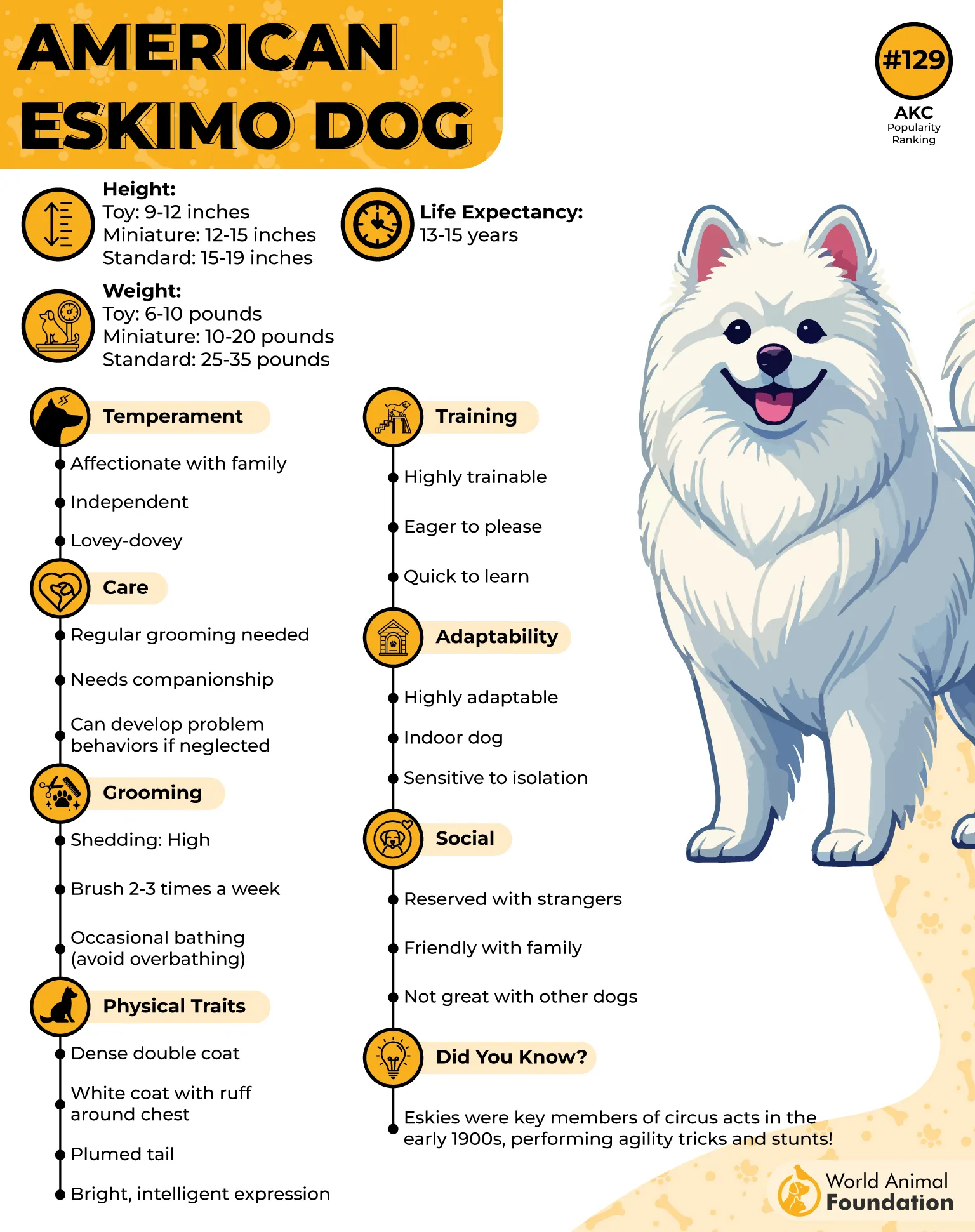
Keeping up with its energy requires dedication. Walks alone won’t do—this dog craves an outlet for its boundless zest. Think of structured activities, mental puzzles, and interactive games. Left unstimulated, expect inventive mischief, as boredom leads to surprisingly creative escapades.
That signature coat isn’t just for looks; it provides insulation against harsh weather. Brushing a few times weekly keeps it pristine. Shedding never takes a break, so consistent grooming is non-negotiable. Neglecting it? Prepare for a fluff-covered home.
Social but discerning, it thrives on companionship but doesn’t roll out the red carpet for strangers. Introductions on its terms work best. Early exposure to different environments molds a confident, well-adjusted dog ready to handle anything.
Fun Fact
Once a star of traveling circuses, this breed dazzled audiences with gravity-defying tricks, proving that intelligence and athleticism go paw-in-paw!
5. Rat Terrier
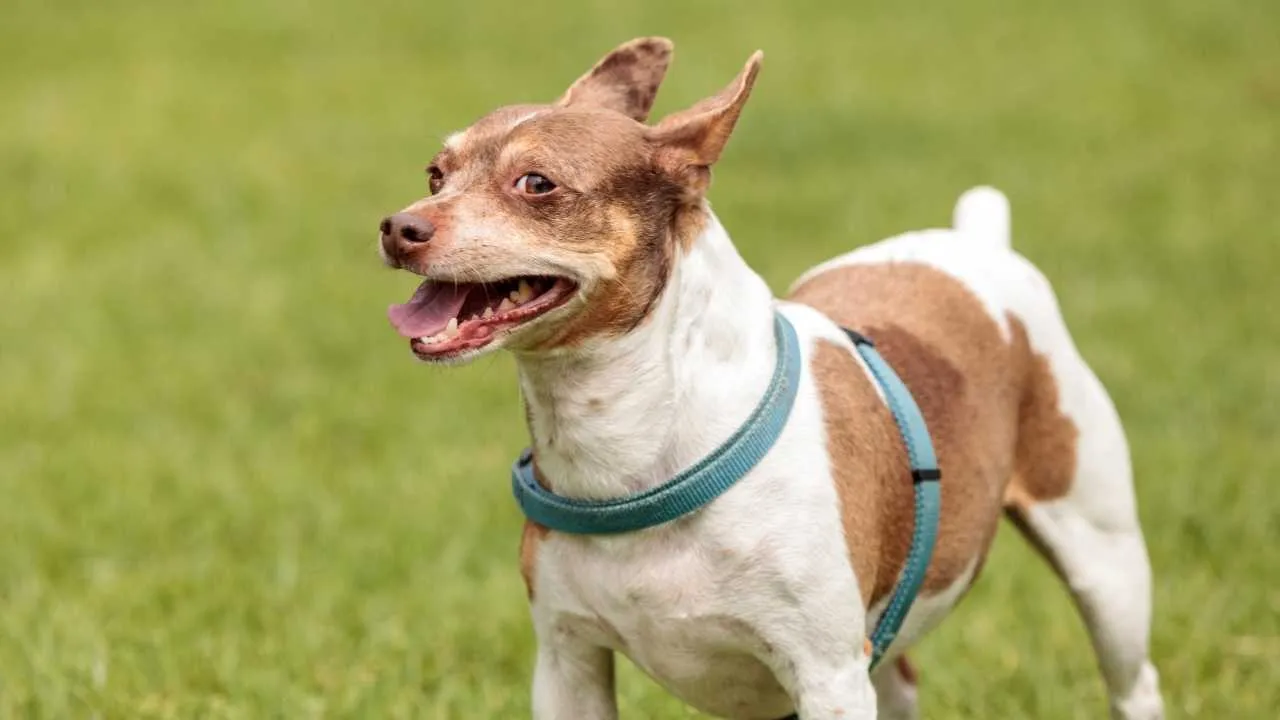
Weight: 10–25 lbs
Height: 10–18 inches
Small but packed with personality, the Rat Terrier is a fearless, fast-moving, and always-alert breed. Originally a farmhand, it earned its name by dominating vermin control, making it an invaluable partner in keeping barns rodent-free.
Forget couch potato tendencies—this breed is wired for action. Speed, agility, and an eagerness to chase anything that moves make it a natural at competitive dog sports. Lure coursing, agility drills, and retrieval games bring out its best.
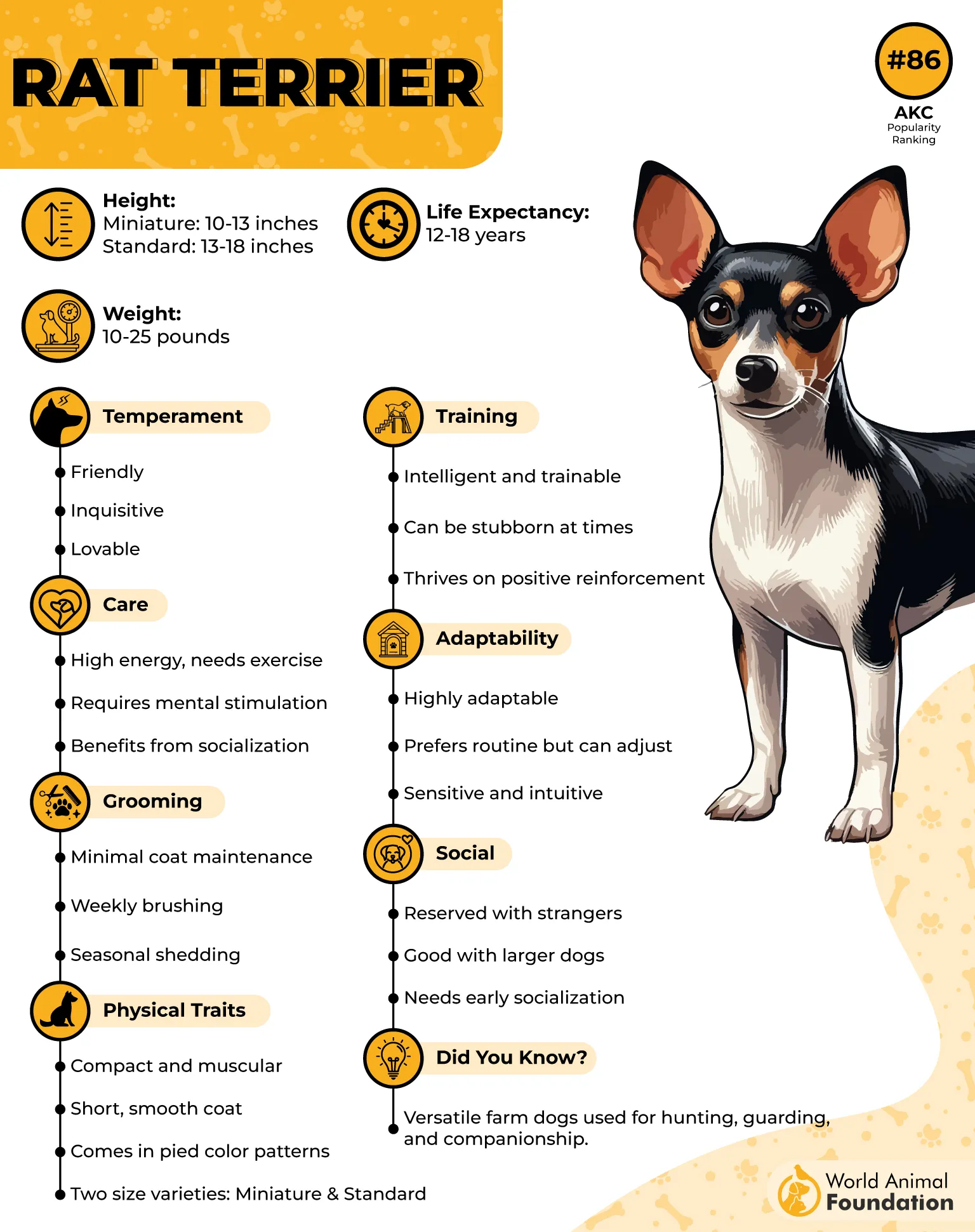
Compact and well-muscled, it can keep up with the most active lifestyles. Hikes, runs, or an open field to sprint in? Absolute heaven. A sedentary life? A nightmare. Underestimating its exercise needs leads to pent-up energy with chaotic results.
While its short coat is fuss-free, its grooming needs aren’t zero. Weekly brushing maintains coat health, while regular nail trimming keeps it comfortable. Given its love for digging, those paws will need frequent attention to stay clean.
Sharp-witted and independent, training requires a mix of patience and creativity. Command repetition? Snooze-worthy. Keep lessons short, engaging, and rewarding. A well-trained Rat Terrier is an absolute delight, but slack on training, and it’ll outsmart you effortlessly.
Fun Fact
Teddy Roosevelt credited the Rat Terrier for ridding the White House of a rat infestation, cementing its reputation as an elite exterminator!
6. Border Terrier
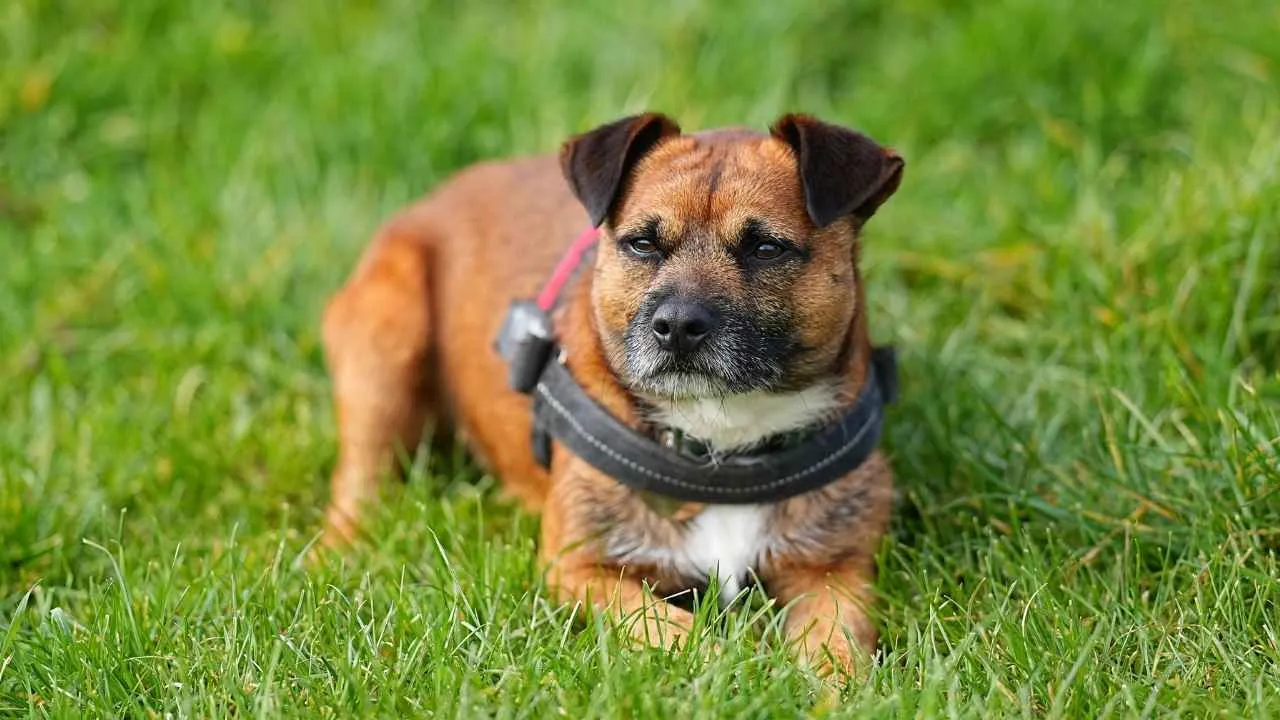
Weight: 11.5–15.5 lbs
Height: 10–11 inches
Rugged, spirited, and always ready for adventure, the Border Terrier is a compact powerhouse. Originally bred to chase foxes, it brings endless determination and stamina, refusing to back down from a challenge. Expect a dog that’s always on the move!
Its resilient, wiry coat shields it from the elements, a legacy of its working dog roots. Low-maintenance but not no-maintenance, hand-stripping keeps its coat in top condition. Skip regular upkeep, and its rough fur loses its protective edge.
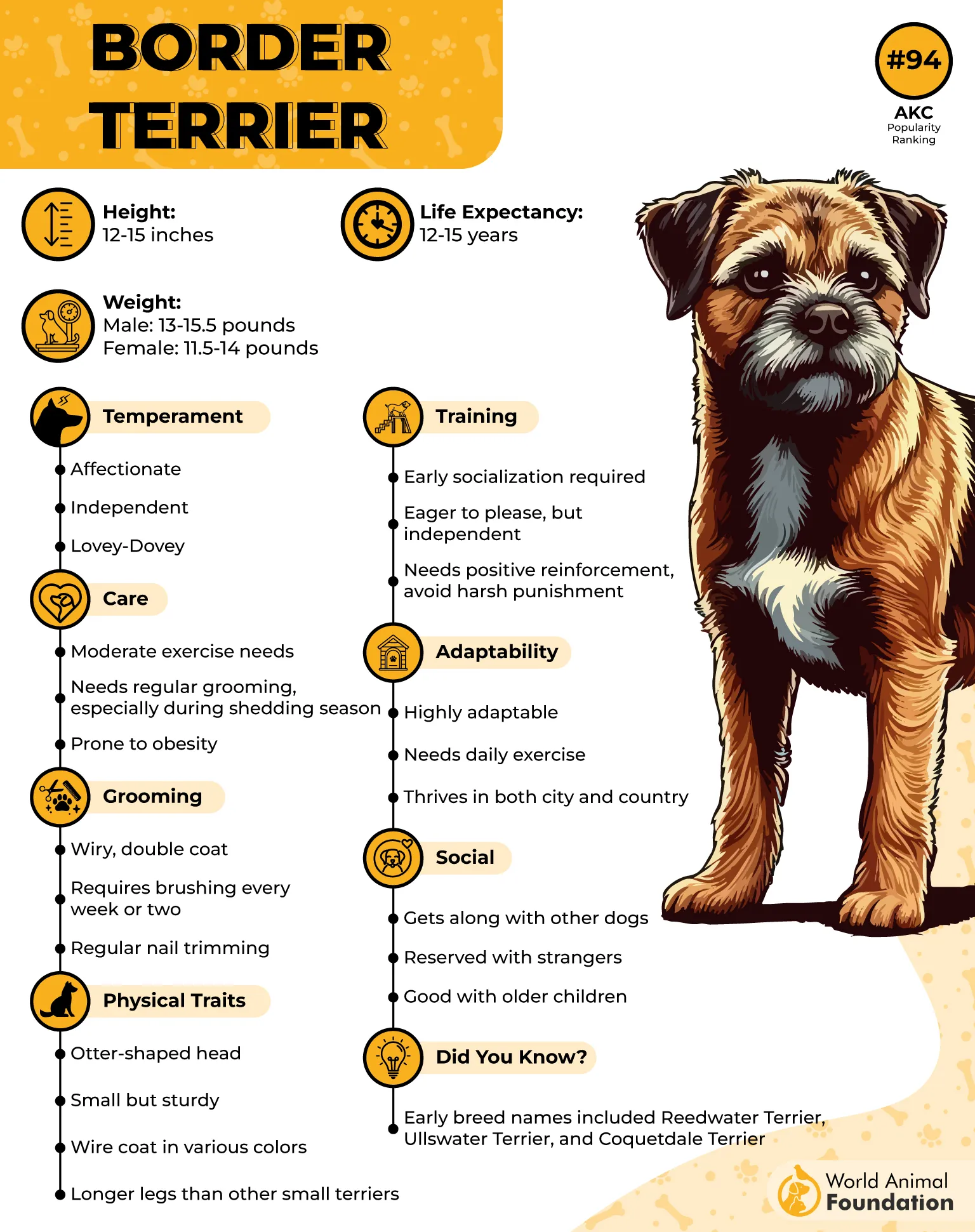
Digging? Second nature. Its history of tunneling after prey means gardens are fair game. A secure yard is a must unless you’re willing to embrace unexpected landscaping projects courtesy of this enthusiastic earthmover.
Border Terriers aren’t just active; they’re problem solvers. Boredom leads to ingenious escape plans and creative troublemaking. Interactive toys, scent-based games, and mentally stimulating tasks prevent their sharp minds from finding mischief elsewhere.
This breed isn’t overly yappy. That said, when it decides to sound the alarm, expect an urgent and determined bark. Its keen sense of awareness makes it a surprisingly effective watchdog despite its small stature.
Fun Fact
With its uniquely shaped head, the Border Terrier can squeeze through impossibly tight spaces—an essential skill for its original fox-hunting role!
7. Boston Terrier
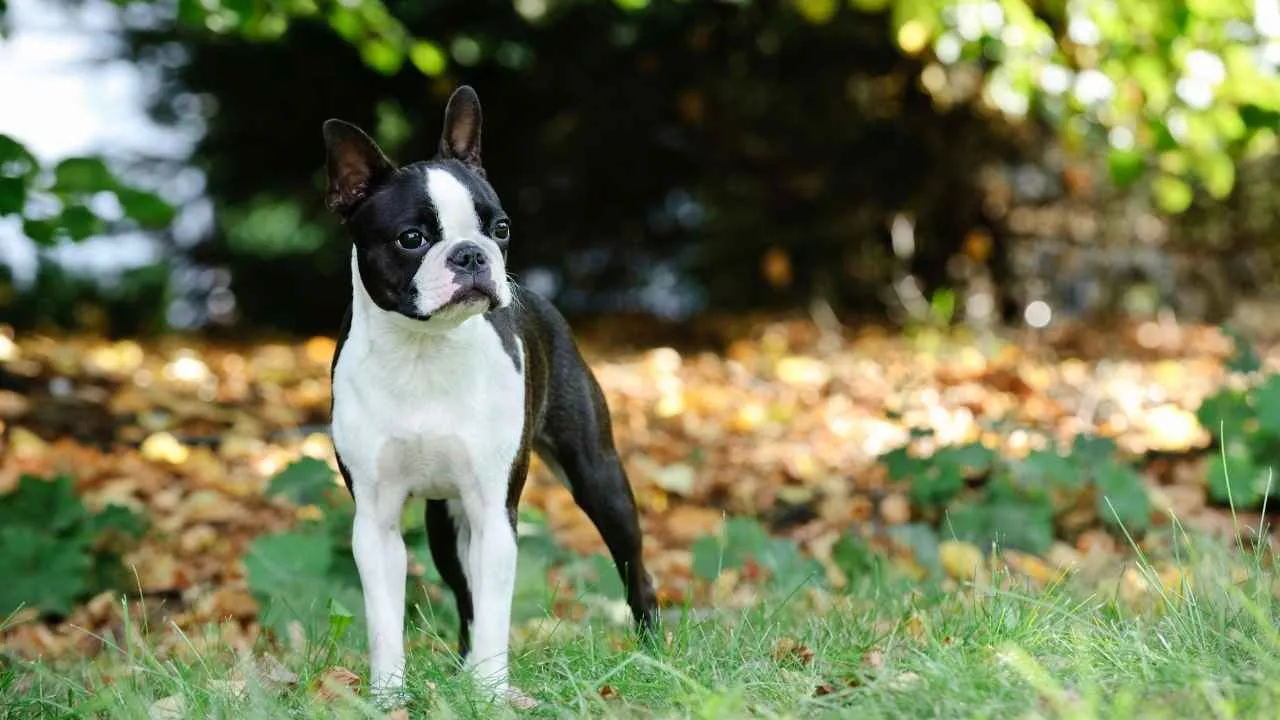
Weight: under 25 lbs
Height: 15–17 inches
Dapper, charming, and spunk, the Boston Terrier is a breed bursting with personality. Its tuxedo-like markings earned it the nickname “The American Gentleman,” but don’t let its polished appearance fool you—it’s as lively as they come!
This breed thrives on companionship, always eager to be part of the action. Whether it’s tagging along on errands, joining in family activities, or making new friends, a Boston Terrier prefers a life of social engagement over solitude.
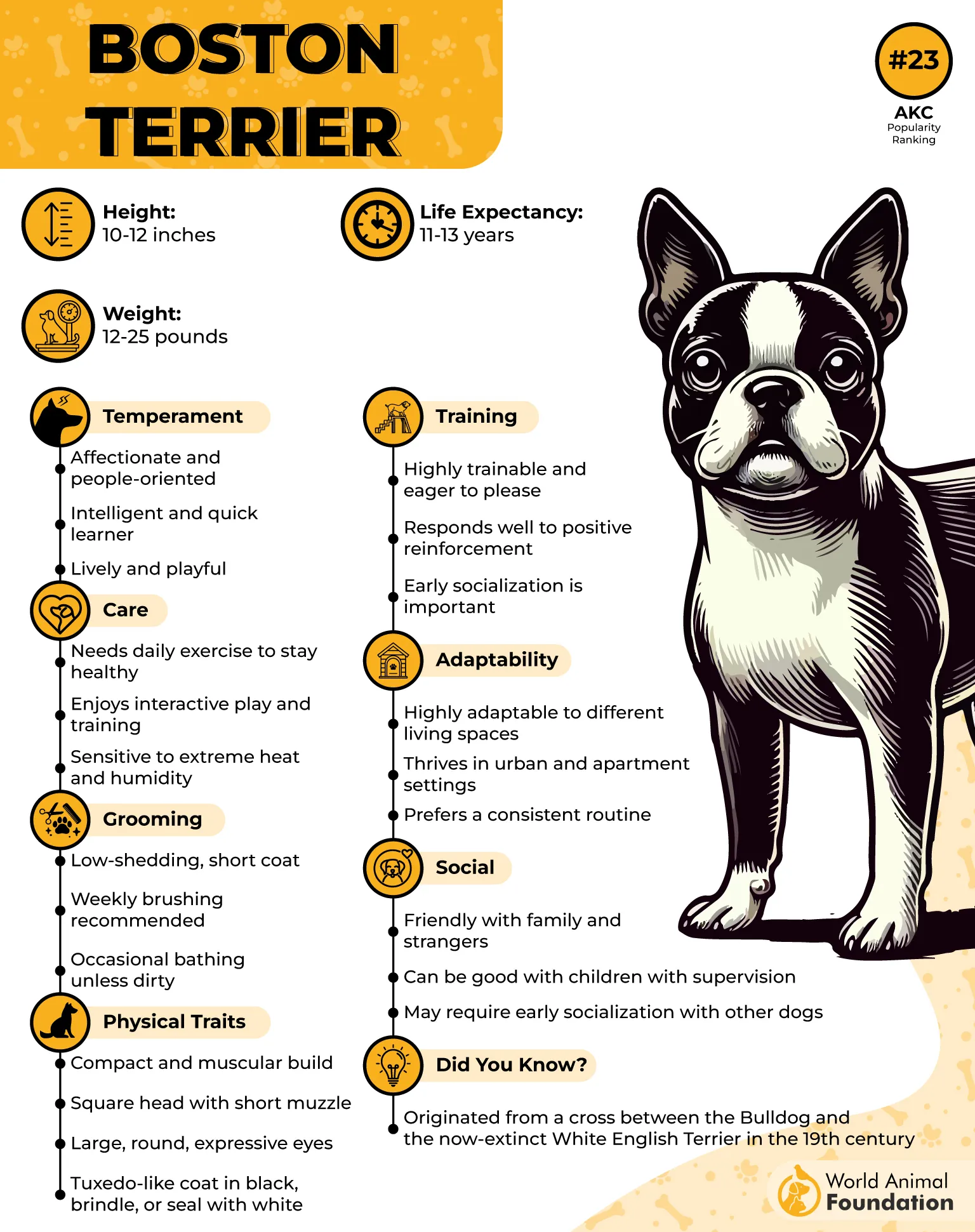
Short-nosed breeds require careful exercise management, and this one is no exception. It loves a playful romp but overheats quickly. Keeping workouts moderate and avoiding extreme weather ensures this enthusiastic pup stays comfortable and safe.
According to PetMD, grooming is blissfully simple. A weekly wipe-down keeps its short coat shiny, but facial wrinkles need extra care to prevent irritation. Despite minimal shedding, regular brushing keeps loose hair at bay and maintains coat health.
Training? A joy when handled correctly. Boston Terriers love to please but have a mischievous streak. A balance of structure and fun makes learning effortless. Too much rigidity? They’ll turn training into a game of stubborn refusal.
Fun Fact
Boston Terriers hold the honor of being the first dog breed developed in the United States, proudly earning their place as America’s own homegrown purebred!
Conclusion
Small to medium dog breeds offer the best of both worlds—compact enough for easy handling yet sturdy enough for an active lifestyle. Their adaptability makes them ideal for apartments, suburban homes, and even rural settings. Whether you need a watchdog, a jogging companion, or a relaxed family pet, there’s a breed that fits every routine for every pet parent.
These dogs bring energy, affection, and companionship while remaining manageable in size and care. Their intelligence and trainability make them great for first-time owners and experienced handlers alike. With proper training, exercise, and attention, they integrate into daily life, getting along well with other dogs and creating a strong bond with their families.
Breeds like the American Hairless Terrier, Portuguese Water Dog, Yorkshire Terrier, English Cocker Spaniel, Bichon Frise, German Pinscher, and Italian Greyhound each have their own unique traits, but the ones covered above highlight some of the most adaptable small to medium-sized companions.
Choosing the right breed means considering temperament, energy levels, and grooming needs. With so many incredible medium-sized dog breeds available, bringing home a new dog is both exciting and rewarding.


